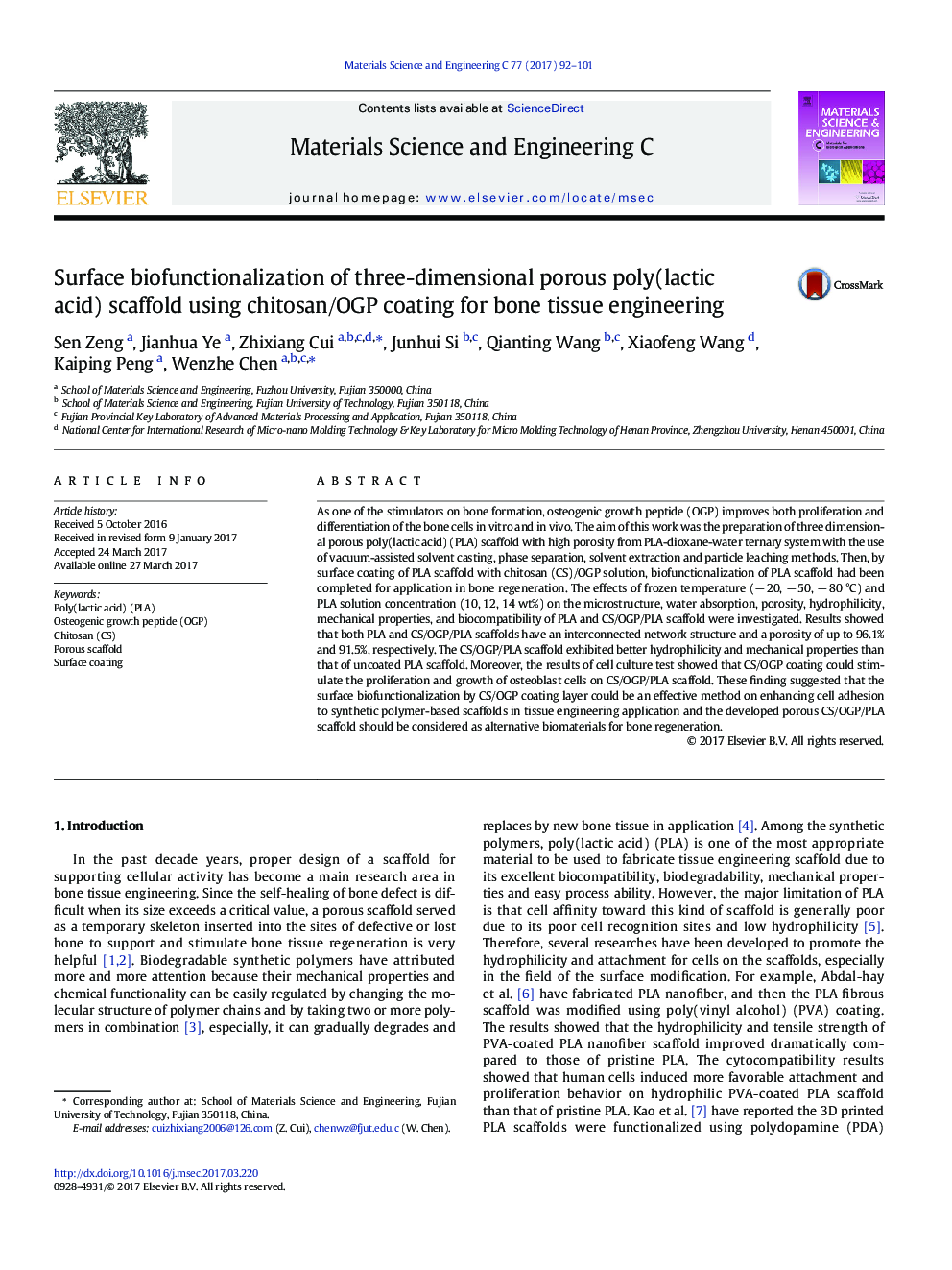| Article ID | Journal | Published Year | Pages | File Type |
|---|---|---|---|---|
| 5434504 | Materials Science and Engineering: C | 2017 | 10 Pages |
â¢PLA scaffold with excellent interconnectivity was successfully fabricated by vacuum-assisted solvent casting methods.â¢Biofunctional CS/OGP/PLA scaffold can be prepared by simple surface coating method.â¢OGP was successfully used as stimulators to improve the proliferation and differentiation of the bone cells.â¢The CS/OGP/PLA scaffold exhibited better hydrophilicity and mechanical properties than that of uncoated PLA scaffold.
As one of the stimulators on bone formation, osteogenic growth peptide (OGP) improves both proliferation and differentiation of the bone cells in vitro and in vivo. The aim of this work was the preparation of three dimensional porous poly(lactic acid) (PLA) scaffold with high porosity from PLA-dioxane-water ternary system with the use of vacuum-assisted solvent casting, phase separation, solvent extraction and particle leaching methods. Then, by surface coating of PLA scaffold with chitosan (CS)/OGP solution, biofunctionalization of PLA scaffold had been completed for application in bone regeneration. The effects of frozen temperature (â 20, â 50, â 80 °C) and PLA solution concentration (10, 12, 14 wt%) on the microstructure, water absorption, porosity, hydrophilicity, mechanical properties, and biocompatibility of PLA and CS/OGP/PLA scaffold were investigated. Results showed that both PLA and CS/OGP/PLA scaffolds have an interconnected network structure and a porosity of up to 96.1% and 91.5%, respectively. The CS/OGP/PLA scaffold exhibited better hydrophilicity and mechanical properties than that of uncoated PLA scaffold. Moreover, the results of cell culture test showed that CS/OGP coating could stimulate the proliferation and growth of osteoblast cells on CS/OGP/PLA scaffold. These finding suggested that the surface biofunctionalization by CS/OGP coating layer could be an effective method on enhancing cell adhesion to synthetic polymer-based scaffolds in tissue engineering application and the developed porous CS/OGP/PLA scaffold should be considered as alternative biomaterials for bone regeneration.
